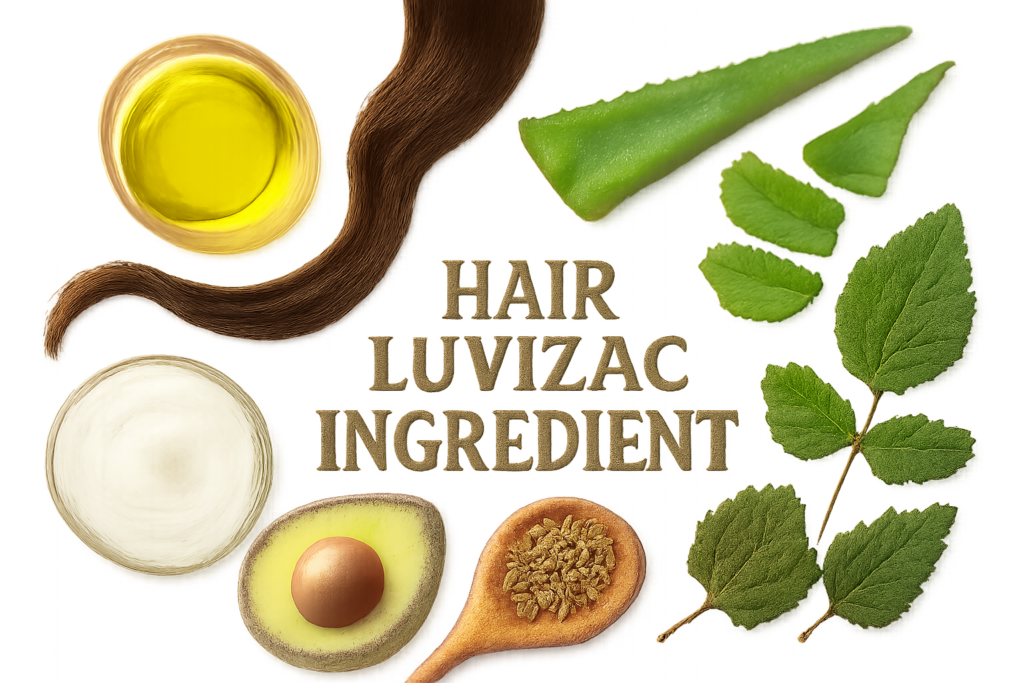hair luvizac ingredient
When looking for effective hair care products, the formula matters as much as the brand. The hair luvizac ingredient often appears on ingredient lists, drawing attention for good reason. But what exactly is this ingredient, and why is it showing up in shampoos, conditioners, and hair serums? Let’s take a closer look at what hair luvizac is, how it works, and whether it deserves a spot in your routine.
What Is Hair Luvizac Ingredient?
Hair luvizac ingredient isn’t a familiar plant extract or essential oil—it’s a specialized conditioning polymer. Its main purpose is to improve the texture, manageability, and appearance of your hair. This ingredient is engineered to coat hair strands, reducing friction, and making detangling easier. You’ll usually find it listed in salon-quality products aimed at delivering a sleek feel without heavy build-up.
Key Benefits
One of the reasons hair luvizac ingredient stands out is its versatility. Here’s what it brings to your regimen:
- Smoother Texture: The coating action helps make each strand feel silkier, cutting down on roughness and split ends.
- Enhanced Manageability: Tangles can become a thing of the past, as hair is easier to comb or brush, both wet and dry.
- Lightweight Feel: Unlike some silicones that can weigh hair down, hair luvizac is designed for a lighter touch. You get softness but not the limp, greasy after-effect.
Potential Downsides
No single hair ingredient is perfect for everyone. There are a few things to consider before choosing products with hair luvizac ingredient:
- May Build Up: If used daily and not cleansed properly, the conditioning layer can cause slight build-up. Clarifying shampoos can help.
- Synthetic Nature: Those seeking only natural or organic ingredients might want to check the label carefully. Hair luvizac is safely manufactured, but not botanical.
- Possible Sensitivity: While rare, some people can experience mild scalp sensitivity. Patch testing new products is always smart.
Where to Find Hair Luvizac Ingredient
You’ll most often spot hair luvizac ingredient in formulas for leave-in conditioners and smoothing serums, though some hydrating shampoos use it as well. If you’re trying to combat frizz, tangling, or a rough hair surface, products containing this polymer can make a noticeable difference.
Look for it about halfway down the list of ingredients—this tells you it’s present in an effective but not overwhelming concentration.
Practical Tips
- Pair with Gentle Cleansers: If you use styling products with hair luvizac ingredient, opt for a mild, sulfate-free shampoo that can gently remove residue without stripping hair.
- Check Compatibility: This ingredient generally works well with colored or chemically treated hair, as it helps maintain smoothness.
- Adjust Frequency: There’s no need to use it daily unless your hair demands it. Find the balance that keeps your strands healthy and manageable.
Bottom Line
Hair luvizac ingredient is earning its place in modern hair care, thanks to its smoothing, light-conditioning profile. It's well suited to anyone who wants easier styling and less tangling, provided you don’t mind a synthetic helper. Smart use and periodic cleansing will help you get the benefits without unwanted buildup. If you value results over the latest buzzword, hair luvizac ingredient is worth considering in your hair routine.


 is the founder of Luck Lounge Land, a platform dedicated to gambling and game theory. Raised in Ironton, Ohio, Ronaldie studied Business Administration and Information Technology at Ohio University. Inspired by a summer internship at a Las Vegas casino, he created Luck Lounge Land to blend his expertise in business and gaming. His website offers news, insights, and interactive features for gambling enthusiasts worldwide.
Ronaldie's innovative approach has made Luck Lounge Land a popular resource for gamblers. He frequently shares his knowledge through articles and webinars. His passion for educating others is evident in the site's 'Game Theory Academy.' Ronaldie's commitment to quality content has attracted a loyal following. He continuously seeks ways to enhance the user experience. Outside of his work, Ronaldie enjoys exploring new casino trends and technologies.
is the founder of Luck Lounge Land, a platform dedicated to gambling and game theory. Raised in Ironton, Ohio, Ronaldie studied Business Administration and Information Technology at Ohio University. Inspired by a summer internship at a Las Vegas casino, he created Luck Lounge Land to blend his expertise in business and gaming. His website offers news, insights, and interactive features for gambling enthusiasts worldwide.
Ronaldie's innovative approach has made Luck Lounge Land a popular resource for gamblers. He frequently shares his knowledge through articles and webinars. His passion for educating others is evident in the site's 'Game Theory Academy.' Ronaldie's commitment to quality content has attracted a loyal following. He continuously seeks ways to enhance the user experience. Outside of his work, Ronaldie enjoys exploring new casino trends and technologies.
